2022 wasn’t the worst year for technical recruiting, but it certainly was one of the hardest. The year started with such high expectations that all came crashing down within the first 3 months. Layoffs at former tech darlings dominated headlines, while startups struggled to raise capital for the first time since the 2008 crisis.
Everyone’s talent acquisition strategy has been in purgatory for the majority of the year and recruiters, sourcers, and HR reps were some of the people hit the hardest by the uncertainty. To get a pulse on how the Talent Acquisition community feels going forward, we interviewed 4 technical recruiting leaders and sent out a survey to TA leaders.
We wanted to discover their biggest challenges in finding talent this year, their hiring plans for 2023, and how recruiters can upskill to avoid being left behind in a rapidly changing environment. Here are their top 5 lessons and a collection of tips from our experience as an AI-sourcing startup that is striving to make the technical recruiting process more efficient.
1. Sourcers and Recruiters need to become Researchers and Advisors in 2023 to avoid being replaced or cut
It’s a challenging time for the TA industry right now, with 150,000 tech workers laid off in 2022 so far. Recruiters are often the first out the door when the economy sinks, and technologies such as artificial intelligence make many recruiters nervous about their job security.
However, after talking to talent acquisition leaders across the industry this year, we believe it’s more than possible for sourcers and recruiters to make themselves irreplaceable. How do you do it?
The number one message we heard was that recruiters couldn’t just work for hiring teams. They need to work with hiring teams, as valued partners and advisors who provide leaders with the market knowledge, organized data, and context they need to make business decisions.
Research and preparation are fundamental
Todd Davis, the Executive Talent Sourcing Researcher at ServiceNow, told our Tech Recruiting Times that it’s no longer enough to be an “order taker” who simply writes down and carries out a hiring manager’s requirements such as skills, compensation range, and companies to target.
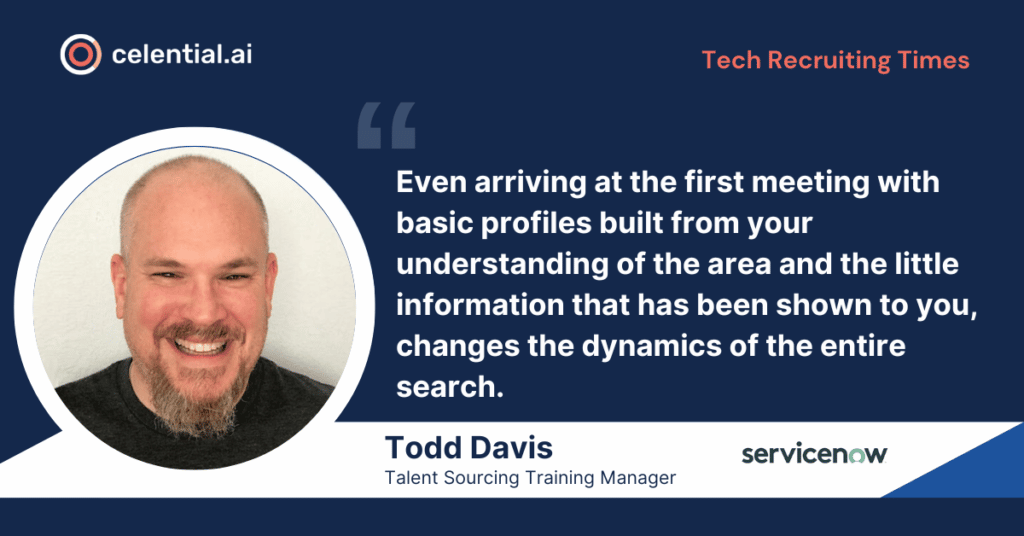
“At that point, you’re disqualifying yourself as an expert in the field — you’re just a resource or tool for the hiring leader to use.
On the other hand, if you take time to understand the field and come in with prepared materials, you become a partner. Even arriving at the first meeting with basic profiles built from your understanding of the area and the little information that has been shown to you, changes the dynamics of the entire search,” he said.
Tools can be replaced, but experts and advisors cannot.
“I think what separates good recruiters from great ones is that little extra element of expertise,” said Mike Germano, Global Head of TA at CloudFactory. “If you can establish yourself as someone that understands a company’s business, market, or technical challenges, you have a great shot at succeeding in 2023”.
Data is becoming an indispensable asset for recruiters to convey our value and communicate with business leaders.
Speaking of data, it is the language of the C-suite and recruiters need to know how to speak it in 2023.
In times of crisis, talent acquisition is seen as a cost center, and we are the first to be cut. The one way to change that narrative is to present data on the real value we’re adding to companies’ bottom lines. That includes not just filling roles, but also the measurable impact we have on culture, brand, employee retention, and business operations.
So how do you approach having a data-driven conversation?
By giving hard evidence to start.
“Every time we ask for a new tool, there’s a war,” explains Mike Wolford, the Director of Analytics at WilsonHCG. “But if you go in and you say, “I need $10,000 to invest in a tool that’s going to cut three days off of our time-to-fill. That’ll save us $427 per candidate, and we interview 3000 people a year.” If you frame it that way, you’ll get that tool.”
Another component of having data-driven conversations is to be the voice of reason when people let their emotions get the best of them.
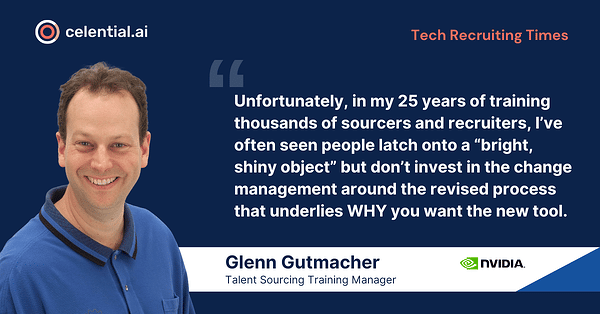
As Glenn Gutmacher, Talent Sourcing Training Manager at Nvidia, commented to us, “Unfortunately, in my 25 years of training thousands of sourcers and recruiters, I’ve often seen people latch onto a “bright, shiny object” (as my former Microsoft boss Rob McIntosh explained it in this 2008 recruiting blog post that remains just as true now) but don’t invest in the change management around the revised process that underlies WHY you want the new tool.
In those cases, many organizations launch something due to an enthused internal evangelist, but the rest of the team doesn’t fully appreciate the potential value-add, and soon after they go back to the faulty processes they’re comfortable with but don’t actually advance the TA function.
Now you’ve slapped fancy tech over a faulty process, and that might even cost you more than not adding it at all!”
How you tell stories builds your credibility
It’s not enough to simply amass a set of data — how that data is curated, organized, and turned into a narrative is key in influencing business decisions.
“I’ve seen sourcers and recruiters show up to a hiring leader meeting and try to articulate their research in spreadsheet format, Todd Davis told us. And you can tell the hiring leader is not getting it and the information is not resonating. On the other hand, we can take your list and put it into a PowerPoint to make it really appealing.
It allows you to showcase your methodology, present a slate of profiles, and visualize the companies you’re sourcing from with logos. Some people say it’s smoke and mirrors, but it’s honestly about how you’re sharing your information.
Something as simple as that builds your personal brand internally in the company. Trust is gained in drops and lost in buckets. Sourcers have to keep that in mind every time they show up to a meeting, they’re either building or breaking down their personal brand and credibility capital.”
2. A winning technical recruiting strategy during economic uncertainty is built with solid processes
In uncertain economic times, it is important to have systems and processes in place that will keep your business intact. Part of that is your talent acquisition strategy and hiring process.
We asked Todd Davis about where recruiters should start to put themselves in the strongest possible position heading into 2023.
His answer?
“If you take the time to build a strong sourcing methodology, you will put yourself ahead of the rest of your colleagues and peers in the industry,” he told us. “It’s good to move with urgency. But what makes you really efficient and deadly is not just moving with urgency, but with focus and purpose.”
It’s going to be a bad situation for the ones that are just relying on LinkedIn to source candidates. There are several problems with just relying on LinkedIn, from fake profiles to data degradation. That is why I never use one single source of data as truth.”
Having a defined methodology that your recruiters and sourcers can follow will ultimately help them be better organized and access larger pools of candidates. But it doesn’t stop there. Candidate experience will also make or break a hire.
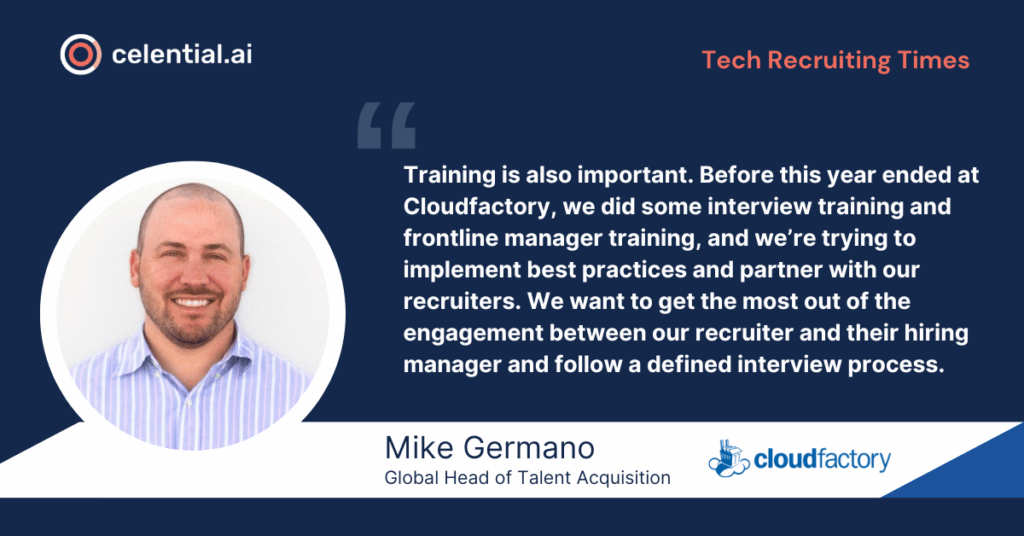
We asked Mike Germano from Cloud Factory what he thought were the parts of the hiring process to focus on and he said:
“You have to be flexible about what your processes are. You don’t want to have an over-inundated, long drawn-out interview process.
I know, sometimes, some companies do maybe three steps, four steps, or five steps. So, you have to find what works for your company, and if it’s still adhering to having a well-structured interview process.
It’s not always a straight line, there are candidates now where you could go off the rails a bit, but you should always be able to come back to a streamlined process.
Training is also important. Before this year ended at Cloudfactory, we did some interview training and frontline manager training, and we’re trying to implement best practices and partner with our recruiters. We want to get the most out of the engagement between our recruiter and their hiring manager and follow a defined interview process.”
We’ve written several different articles on technical recruiting tips based on our own internal best practices. Here are our top 5 tips for some key processes you might want to consider revamping heading into the New Year.
Tip #1: Hyperpersonalization of emails is key to attracting passive candidates in 2023
It’s not easy to find great candidates to fill your open positions, and even harder to persuade great candidates to reply to your cold recruiting email. With the effects of the Great Resignation and tight labor market, tech talent has become used to tuning out recruiters’ messages as noise.
However, if you start selling from line one and tell a compelling story starring the potential candidate you’ll have considerably more success attracting developers’ attention.
In your message, explain how your job opportunity and company culture are aligned with their values, career goals, and trajectory.
Take it a step further as Mike Germano explains and get your candidates excited by explaining what tools they will be working with and what they will be building.
As high-profile companies conduct layoffs and startups see an opportunity to finally snag the high-quality talent they’ve been eyeing, now’s the perfect time to up your game with our favorite passive candidate email templates.
Tip #2: Find developers in creative talent pools
Many of the best developers aren’t on LinkedIn — whether it’s to hide from pesky recruiters or because they don’t have any trouble finding a job.
3 in 10 software engineers don’t use LinkedIn at all. Many others who do use the site have sparse or outdated profiles that don’t tell you a lot about what they’re actually working on.
By joining developer communities such as GitHub, Stack Overflow, HackerNoon, and Women Who Code, you can refresh your talent pool, get insight into developers’ current skills and projects, and locate exceptional developers who might not market themselves on professional networks. As a bonus, you’ll have all the info you need to start an organic conversation.

If you are new to the space, you can check out our guides on how to source on Github or how to find technical candidates on Stack Overflow.
Boolean Search, or the strategy of using commands like AND, OR, and NOT, is also an invaluable tool for sifting through profiles. With Boolean search, you can sift through vast amounts of data from job boards, career sites, ATS or CRM databases, and even Google directly for more precise candidate matches.
Tip #3: Don’t give candidates excuses to drop out of your process
Long gone are the days when companies could drag candidates through 6 rounds of interviews and coding assessments and expect anyone but the most desperate to be around by the end.
A lot has changed in the hiring process in the past few years, and candidates now (rightfully) expect employers to respect and value their time.
To be successful, keep the number of hoops for candidates to jump through to a minimum. Once a candidate shows interest, don’t immediately start grilling them about resumes and salary expectations. Instead, if you get them on a call to build their excitement about the opportunity, they’ll be far more likely to proceed through your process.
And while there should be a technical, problem-solving component to your interview, it shouldn’t take more than a couple of hours in total. One tip is to test it on your current developers to ensure it’s reflective of the work you’re doing.
Tip #4: Be more proactive in your search for diverse talent
Millennials and Gen Z are the most diverse cohort of professionals yet, and they increasingly demand DEI in the workplace. However, progress is still slow. The tech workforce is currently only 7% Black, 8% Hispanic and Latino, and 25% women. Recent studies have found that:
- Women often face social backlash when they negotiate as aggressively as men.
- One in four Black employees reports facing discrimination at their workplace.
- Nearly half of LGBTQ+ employees fear being out will hurt their career prospects.
- Only 21% of all software engineers are women.
With underrepresented groups often systematically underpaid across the industry, a proactive approach to pay transparency and eliminating pay gaps can help you recruit and retain top diverse talent.
According to Glenn Gutmacher, “Blind” interviewing is one key tactic talent teams use to hire diverse talent.
“Many search tools will insert a cat or dog face instead of the person’s name and remove other identifying information automatically, so as not to bias anyone starting from the sourcing stage through the first interview. Otherwise, you can inadvertently filter out promising talent.
Is there really a reason to see someone’s name, location, or face at the first evaluation stage? Or is someone who’s disabled really unable to do the job if you put modest accommodations in place (which are probably legally required, anyway)?”
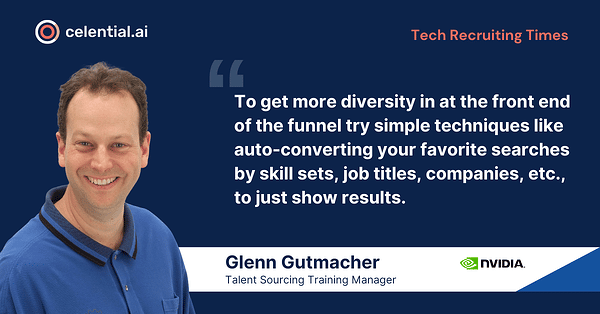
There are a multitude of tech tools that can help you to eliminate bias in your job postings, assess candidates neutrally, analyze the state of diversity in your organization, and more.
Companies should also consider remote work, which allows employers to recruit from diverse talent pools across the country. Diverse remote workers report a higher “sense of belonging” and a sense of being “fairly treated” at work, increasing retention among employees of color and women.
Tip #5: Upskill and uplevel your recruiting team
Employee engagement and satisfaction were escalating globally — until 2022. Now “quiet quitting” is just the latest workforce trend on LinkedIn, and it’s hitting Millennials and Gen Z the hardest with most employees (55%) born after 1989 feeling disengaged.
There are many ways to combat burnout and “quiet quitting”, such as by building personal connections and ensuring that your company culture emphasizes positive recognition. But ultimately, the best way to keep your employees engaged is to offer opportunities to upskill and reskill. This can benefit employers in a multitude of ways — you’ll increase productivity, keep employees happy, and save significantly on recruiting costs.
You can uplevel your recruiting team’s technical knowledge quickly and inexpensively with resources such as free internet courses, YouTube videos, or a technical recruiting cheat sheet.
Recruiters who can tell the difference between a Data Scientist and a Data Engineer, or who can walk you through how to hire a Full Stack Engineer, will be a lot more effective at finding the right candidate for the right job. And, they’ll be able to have a meaningful first conversation with a developer without annoying them.
3. New automation tech tools are revolutionizing sourcing and outreach
Continuing with that last point, another great way for recruiters to up their game is learning to use the best sourcing tech of 2023. AI and automation tools can help you cut out menial, repetitive work and stretch your time further.
We asked recruiting tech pioneer, and influencer Glenn Gutmacher for some recommendations for high-impact, scalable and cost-effective tools sourcers and recruiters should be using while also including our own.
Link and tab management
If you’re a recruiter, you’re likely familiar with this feeling.
Source: optimalaccess.com
Luckily, there are tools like OneTab and Session Buddy to help you organize, consolidate, and save for later the 1000 candidate profiles you have open (for example). Conversely, when you have way too many links that you want to open all at the same time, you can use LinkClump to open them all with one simple click.
Automatically fill info in forms and communications
We’re all aware of autofill, but tools like Magical are now available to help you populate common message screens on LinkedIn and other web forms with entire recipient-customized responses. You’ll never have to type “Hi Candidate, I’m impressed by your experience as a Job at Company” again!
Data scrapers
Data scrapers, which automate the extraction of data from websites, can really power up your search. For recruiters, that might look like scraping contact details from a list on an employment agency to advertise a job opportunity or scraping compensation data for a particular role to research a realistic compensation range.
Instant Data Scraper is an easy-to-use tool to get started with, whereas recruiters who are more technical might turn to Webscraper.io for increased functionality.
Data storage and Report Building
Todd Davis stressed the importance of the organizational layer to sourcers’ and recruiters’ methodology. To make a solid and convincing case to influence hiring managers and other partners, finding a tool to organize and process your data is key.
Hunch.ly, which is popular in the OSINT (Open Source Intelligence) Community, is one great way to gather data, put it into a system, and build reports. It automatically collects, documents, and annotates every web page you visit, making it as easy as possible to do online research and present the results.
Celential.ai
At Celential.ai, we like to think of our solution as a strong recruiter + a great outbound recruiting tool. There is no ramp-up time, and all the talent acquisition team has to do is put in the job description, and we will start delivering 10-40 high-quality candidates ready for interviews within the first month.

How is this possible?
First, our AI system takes a deep understanding of candidate backgrounds and job requirements through a 15 M+ talent graph covering the U.S, Canada, Latin America, and now India. It then reveals hidden job requirements and inferred skill proficiencies for candidates.
Second, our AI-powered sourcing solution activates top passive talent through hyper-personalized messaging at scale. Our system engages potential candidates with emails customized to each person and opportunity, resulting in higher response and present-to-interview rates. Our dedicated account managers also work closely with clients to ensure a streamlined and accountable process.
4. Staffing agencies and other traditional recruiting methods are losing ground
Recruiting can be difficult and frustrating, and it can be tempting to hire an agency to do it for you.
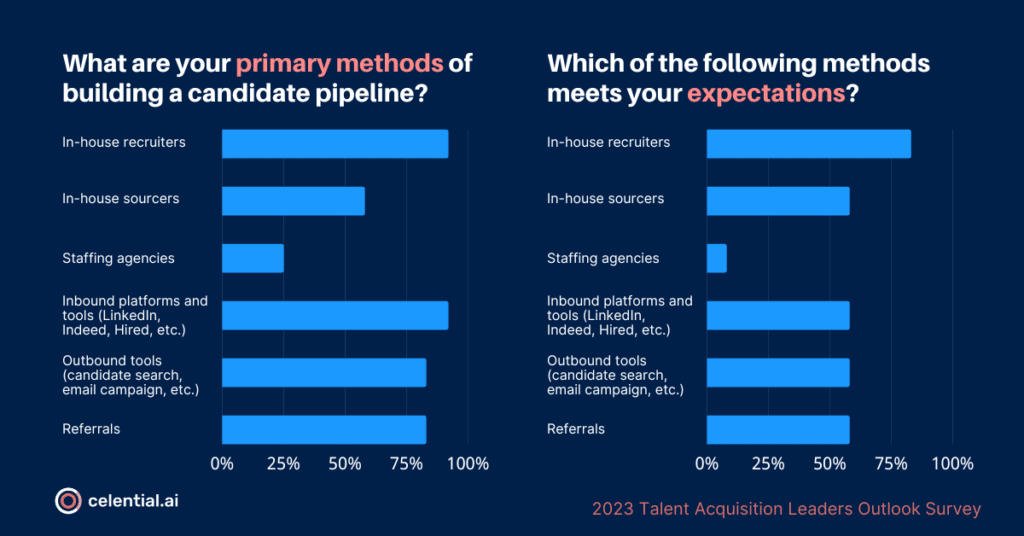
However, when asked what primary methods talent acquisition leaders used to build their talent pipelines, and if they were meeting their expectations, we were surprised by the results.
Our survey found that talent acquisition leaders are increasingly turning away from staffing agencies, and only 25% are currently using them as a primary method of building a pipeline. Instead, they are turning to in-house recruiters (92%) and referrals (83%) for increased control over the recruiting process.
There are a few reasons why agencies aren’t a great solution for most hiring teams, particularly given the current economic climate.
- Agencies are notoriously expensive
- As tech skills grow increasingly specialized, agencies often rely on outdated methods and rarely possess in-depth knowledge of your product, domain, and engineering needs
- Agencies are typically incentivized to mass-contact candidates whether or not they are a good fit, potentially harming candidate experience and your brand. To make matters worse, you waste time screening and interviewing talent you don’t actually want to hire.
With a paltry 8% of talent acquisition leaders reporting in our survey that staffing agencies “meet their expectations,” we predict that staffing agencies will continue to become a relic of the past.
5. Companies need to prepare themselves for pay transparency sooner rather than later
Pay transparency is sweeping across the nation, and it is a labor movement that no one can ignore. The ratio of new publicly posted jobs with salary data has already increased from 27% to 36% over the last year as more and more states get on board.
New laws are imposing harsh consequences on employers who don’t comply. These laws are often ambiguous (for example, if you have just one remote employee in California, you likely have to comply with its new law), and employers need to take steps now to avoid sharp penalties and future-proof their business.
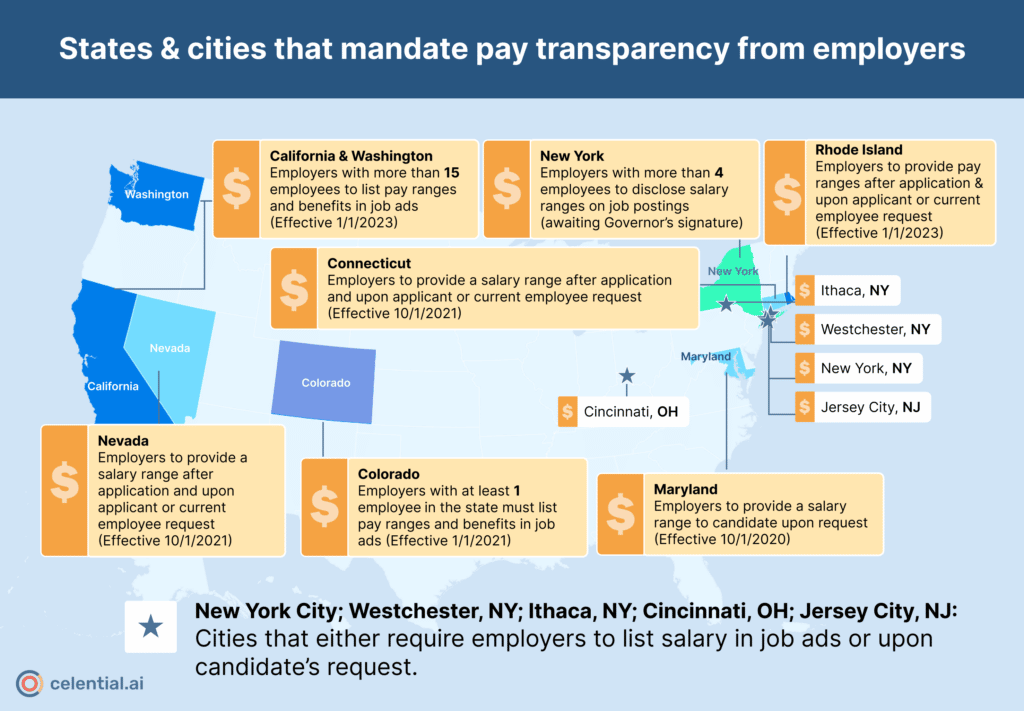
However, for proactive employers, pay transparency is increasingly becoming a key competitive advantage and a crucial element in attracting the best talent in today’s market.
It’s hard to get 98% of Americans to agree on anything, but pay transparency is just that popular. It also gives a big boost to candidate experience — sharing pay ranges early on saves everyone time and signals to top talent that your company is a great place to work.
But it doesn’t just stop at the hire. Employee retention is huge in the wake of the Great Resignation, and companies are tired of wasting time and money on repeatedly recruiting new employees for the same roles. Being underpaid is the top reason why workers quit, and it is not a good deal to save $10,000 by underpaying an employee only to have to replace them for potentially $30,000-$45,000 or more.
Learn the best employee retention strategies here.
Pay transparency is also the ethical thing to do, and a big win for diversity and equity. Younger generations entering the workforce are more likely to participate in the recent movements for racial reckoning and are increasingly demanding DEI in the workplace.
Want a complete breakdown of Pay transparency? Check out our on-demand webinar that gives a full overview of the new laws.
6. The labor market and talent acquisition are both still going strong, and the recession will be mild
Alarming tech layoff headlines are leaving out a lot about the economy and the state of the workforce. 10.3 million jobs are currently open, hundreds of thousands continued to be added through November, and the current overall layoff rate of .9% is historically low.
For context, at the height of the pandemic in April 2020, the labor market was at its bottom at 4.5 million open jobs. Mike Wolford has been studying the labor market data for years and gives his own summary in the video below:
It falls to the laws of supply and demand. The workforce participation rate is shrinking, and the need for tech talent is projected to accelerate rapidly over the next decade which means that inevitably, the labor market will continue to go strong in the long term.
In the last questions of our Talent Acquisition Leader survey, we pressed to find out what people’s hiring plans were for next year.
Our survey found that all in all, only 8% of those surveyed didn’t know if they weren’t going to be hiring new employees over the next year. 50% planned to hire between 1-25 employees.
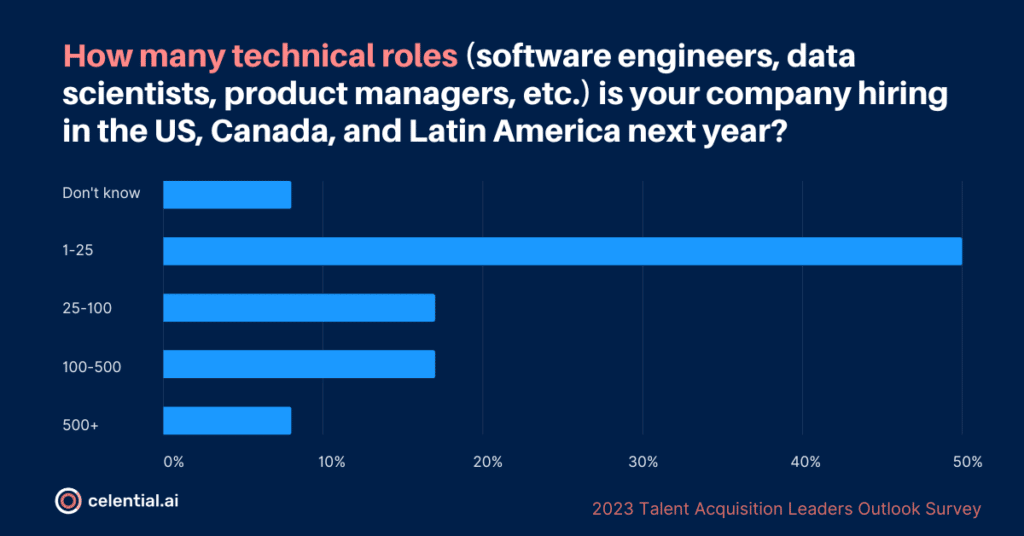
The strong labor market also means that many of the changes caused by the Great Recession are here to stay. When asked about their predictions for how the recruitment landscape will shift, 33% of our survey respondents predicted that candidates will hold onto most of the power. They citied “remote work”, “wage transparency”, “candidate/new hire experience” and “employer value proposition” as key factors in the war for talent moving forward.
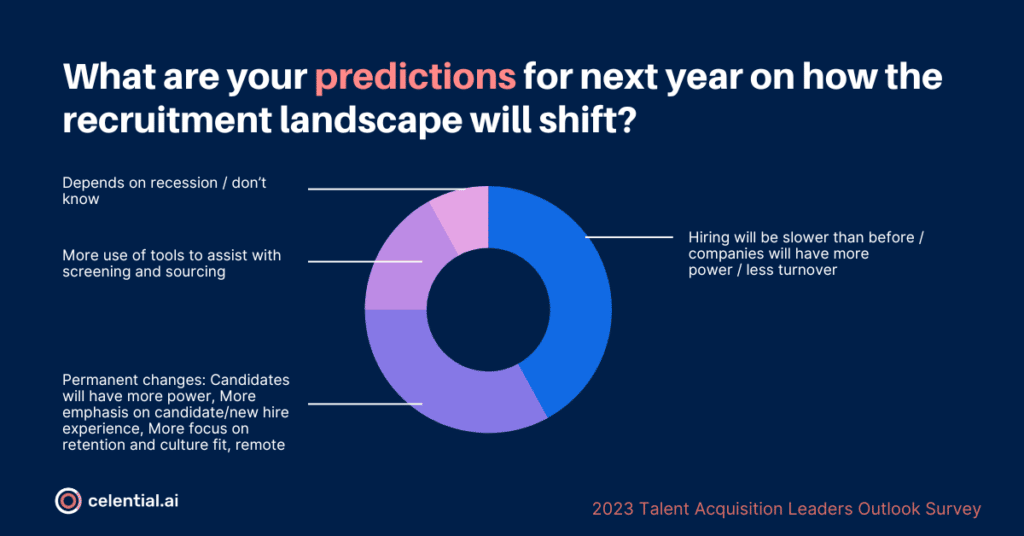
On the other hand, hiring teams need to prepare for a certain amount of turbulence in the short term this upcoming year. A larger percentage, 42% of those surveyed, predicted that hiring will be more “cautious” and “intentional” over the next year. “I see the market shifting back in favor of the employer, but only slightly,” wrote one respondent.
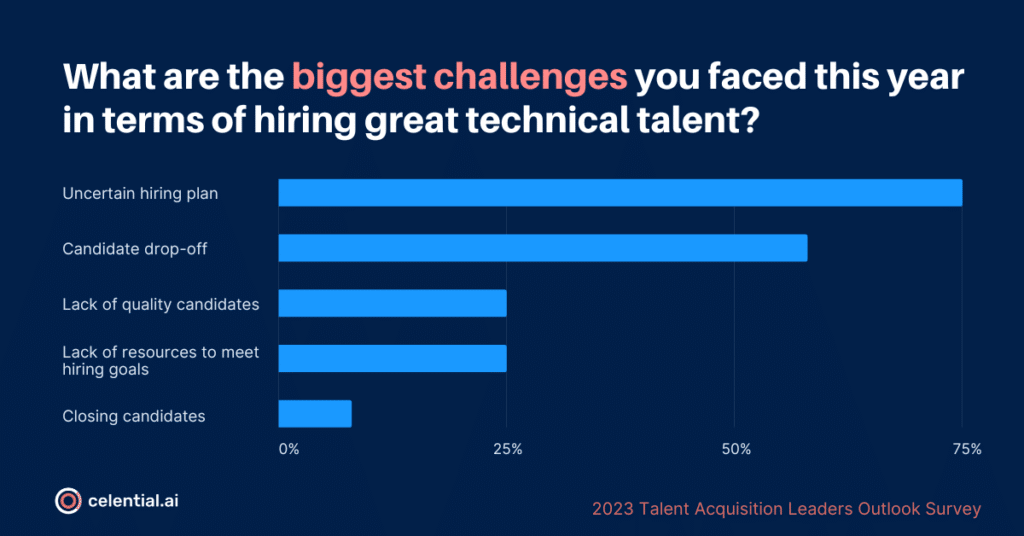
When asked about the biggest challenges they were facing in terms of hiring great technical talent, the leaders we surveyed cited “uncertain hiring plans” (75%) and “candidate drop-off” (58%) as their biggest challenges. As we head into 2023, the focus will likely shift to finding the right fit and retaining valued employees, rather than aggressively adding volume.
To tackle these challenges, we asked our respondents for some advice for TA professionals struggling to make great hires in the current talent market. They told us:
- “This is a great time to refine your craft and approach. If you can learn to navigate this market, when the easier times come (and they will) then you’ll be ready to thrive. In recruiting there are always highs/lows, peaks/valleys, etc. When the times are great, ride the wave as long as you can. When the times are tough, strive to make yourself better.”
- “Make a true effort to connect with your candidates. You need to be able to talk with them about anything and everything to truly find out what they want. Recruiting is a people business first and foremost.”
- “Remove legacy thought from the equation and challenge yourself, and your partners, to think differently about how you attract and assess talent (profiles, skills-based recruitment, etc.) Get creative, be patient, and don’t drop the talent bar.”
- “Having hiring managers on board is critical. Hiring Managers can no longer have the luxury of expecting and waiting for the perfect candidate. They need to be educated to hire on potential, not exclusively on experience.”
Wrapping Up
Our biggest takeaway from this year has to be committing to resilience. If you let the headlines dominate your strategy, you will give up before you fully exhaust all of your resources. The market comes in cycles, and the best recruiters have persevered in even the bleakest situations by adapting their expertise.
At Celential, we have an unwavering belief in the power of technology and how it can make our world a better place. You just need to be patient, and things will turn around for the better.
Learn about our AI powered, human-in-the-loop recruiting service that possesses a talent graph of over 15M tech professionals in the U.S., Canada, Latin America, and now India here.
Table of Contents

















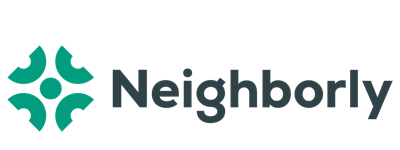















Submit a Comment